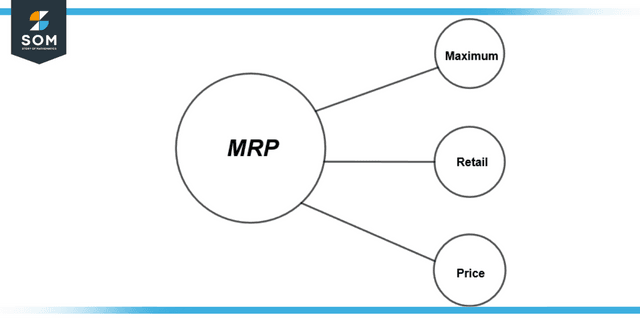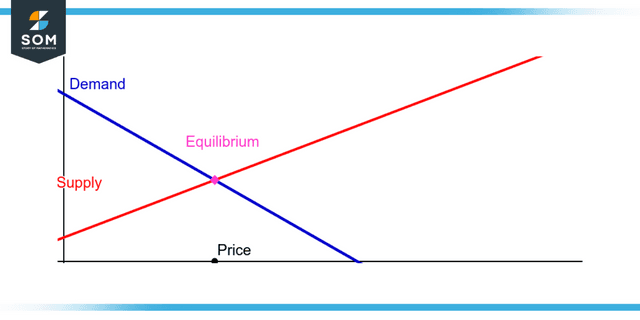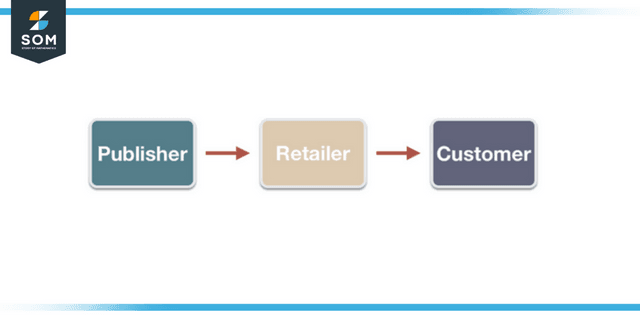JUMP TO TOPIC
Retail Price|Definition & Meaning
Definition
The amount a consumer will pay for an item while purchasing at a retail store is the retail price of that product. This is the total amount that a customer will be charged.
What Is the Retail Price?
The amount a consumer pays for a finished good at a retail establishment is the retail price. These consumers do not purchase the item to resell it to another party. They do so to consume the product.
There is a disparity between the price charged at retail, the price charged by the manufacturer and the price charged by the distributor. Along the supply chain, these are all different rates that each seller is charging.
If a shopkeeper sets a price, the primary objective will be to maximize his profit while maintaining an amount that customers are prepared to pay for the good or service offered.

Figure 1: Maximum Retail Price
Demand and Supply
The supply and demand relationship in economics is the link between the amount of a product that producers seek to supply at various prices and the quantities that consumers wish to buy. In economic theory, this is the primary model used to explain how prices are established.
The combination of supply and demand in a marketplace will ultimately result in a price for a product being established. The price that is determined as a consequence is what is known as the equilibrium price, and it is considered to be an agreement between the consumers and the producers of the commodity.
The market is said to be in equilibrium when the quantity of a good that producers produce is equal to the quantity that consumers purchase.
MSRP
When a manufacturer suggests a retail price, also known as an MSRP, they suggest to the retail outlet the price at which a product ought to be sold. An MSRP can be assigned to any product. Nonetheless, it is typically utilised by things with large values, such as automobiles and electrical equipment.
The Manufacturer’s Suggested Retail Price (MSRP) will ensure that the prices remain stable across all retail establishments.
Setting MSRPs
The manufacturer decides the suggested retail price (MSRP). However, this should apply to every single retailer in the network. The MSRP ought to consider all of the expenditures incurred during the process of manufacturing and selling the product. When determining the pricing, it is essential to consider the markup typical among shops.
It is imperative that the pricing be established at a level that will result in a profit for every link in the supply chain.

Figure 2: Equilibrium Price Graph
The Challenge Presented by Suggested Pricing Methods
The suggested pricing approaches are in direct opposition to the competition hypothesis, which states that to attract customers, shops will set their prices as low as they can go. Customers will not have a competitive edge in this scenario because the manufacturer will choose the pricing, which will most likely be more significant than it could have been otherwise.
Complete the Form of the MRP
It can be charged for a product abbreviated as MRP, which stands for “maximum retail price.” The manufacturer determines this price on a per-product basis.
This Minimum Retail Price (MRP) was created to prevent retail businesses from overcharging their customers for goods and services. Because the MRP will be printed on the product’s packaging, it will be difficult for merchants to offer the item for sale at a price more significant than the MRP.
A corporation will choose the MRP to remain competitive while generating sufficient revenue to support its operations. With the MSRP displayed on every box, the purchaser will not be overcharged.
The Benefits of Using MRP
Customers have a better chance of avoiding being misled by business owners who charge them unfair rates if MRP is used to spread awareness among them. Because the MRP can be altered for a product, manufacturers are able to increase the price of the product correspondingly if it becomes more expensive for them to create the product.
Disadvantages of MRP
The pricing is determined by the manufacturer independently of any other factors. They can decide on an unfair price for the product.
Customers will have less purchasing power if the price is unreasonable, which is especially problematic.
The MRP has the potential to produce an inefficient market, and it increases the level of complexity in the supply chain.
Retail Price Example
There are three retail stores under the Harmony brand, and all of them sell jeweler to females and children. The business gets its jewelry from various distributors, who get their inventory directly from the makers.
The ring can be purchased via the distributor for \$25 per unit. The distributor paid \$10 for the merchandise purchased from the manufacturer. The manufacturer recommends a retail price of \$35 for each necklace sold in stores.
The market management decided to set the ring price at \$50 because it is relatively new, and they hope to bring in some clients. The fact that the product’s pricing was lower than the suggested retail price made the customers more ready to make a purchase.
Conclusion Regarding Retail Price
The price that a consumer will pay for a product while purchasing at a retail store is referred to as the retail price of that product. This is the total amount that a customer will be charged.
The amount a consumer pays for a finished good at a retail establishment is the retail price.

Figure 3: Retail Price Flow Diagram
When a manufacturer suggests a retail price, also known as an MSRP, they recommend the retail outlet regarding the price at which a product ought to be sold.
The manufacturer establishes the Manufacturer’s Suggested Retail Price (MSRP); nevertheless, this should apply to all retailers in the chain.
The suggested pricing approaches are in direct opposition to the competition hypothesis, which states that to attract customers, shops will set their prices as low as they can go.
Solved Example Problems of Retail Price
Example 1
If a product costs \$25 and has a markup of \$15. What is the retail price?
Solution
Retail price is the sum of cost and markup.
Cost + Markup = Retail price
\$25 + \$15 = \$40
Retail price = \$40
Example 2
If a necklace is of \$60 and the markup on the retail percentage is 30%. What is the retail price?
Solution
Cost of necklace = \$60
Markup percentage = 30% = 0.3
Retail price = Cost / (1 – markup %)
60 / (1 – 0.3)
Retail price = 85.71
All images/graphs are created using GeoGebra.
